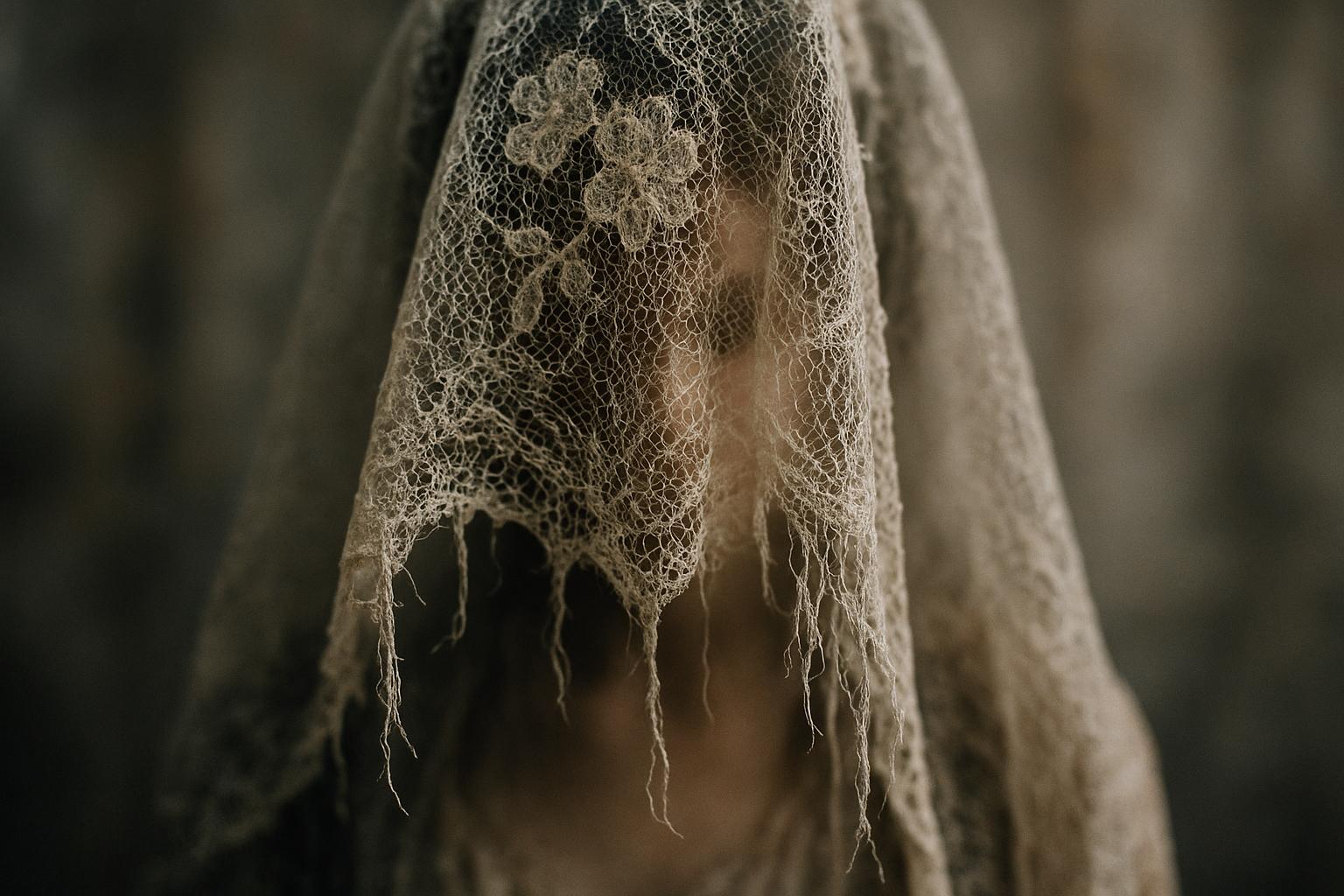The ‘Emotional Authenticity in Craft and Presentation’ trend represents a transformative shift in fashion, forsaking polished spectacle for deeply personal, imperfect, and process-driven storytelling. Emerging strongly at London Fashion Week, this movement features designers who deliberately spotlight the human hand in their work by embracing fingerprints, distressed fabrics, and upcycled materials. Such imperfections serve as evidence of the maker’s presence and commitment to sustainability, aligning fashion with a raw, lived experience rather than unattainable perfection.
Across this trend, fashion presentations are elevated into immersive experiences that blur the boundaries between runway and performance art. For example, The Ouze’s pitch-black room invites intimate discovery of jewellery marked by visible fingerprints, while Dreaming Eli’s gothic church setting, accompanied by live harp music, enshrines sensuality and emotional depth. Models clad in grass-stained Converse at Sinead Gorey’s show embody the chaotic thrill of party-girl dressing, normalising messiness as a statement of authenticity. Designers like Mark Fast elevate knitwear into emotional armour, using sculptural forms that both protect and express bodily vulnerability.
Narratives centred on girlhood and personal identity, often stripped of glamour, are central to this trend. Ashley Williams and Lucila Safdie explore the obsessive and messy rituals of youth, incorporating deliberately unpolished accessories such as pimple patches and toilet paper-inspired elements. Similarly, Ksenia Schnaider’s upcycled denim reworks discarded textiles into avant-garde silhouettes, reflecting a broader cultural focus on sustainability and circular fashion models. These stories of imperfection and chaos resonate with consumers disenchanted by hyper-curated digital aesthetics, seeking tangible connection and realness in the fashion they wear.
This shift is underpinned by a cultural rejection of highly filtered, mass-produced images and a rising appreciation for artisanal craftsmanship and transparency. The tactile evidence of human process — the “maker’s mark” — has become a new luxury signifier in a market increasingly valuing emotional resonance over flashy logos or flawless execution. Industry observers note that the rise of independent designers with smaller budgets facilitates greater risk-taking and a focus on deeply personal, conceptual storytelling. This has broad implications for retail and marketing, encouraging brands to pivot from aspirational fantasy towards narrative-driven, experiential commerce that engages consumers as active participants.
The consumer driving this trend is often a Millennial or Gen Z individual with a strong social and environmental conscience. These “conscious emotional aesthetes” prize authenticity, craft, and sustainability alongside style. Their purchasing behaviour reflects a desire for fashion to express identity and personal journeys rather than merely convey status. They embrace “messy” aesthetics—whether pimple patches or grass stains—as symbols of self-acceptance and rebellion against conventional beauty standards. These consumers often inhabit urban, culturally rich environments, blending high and low elements in their wardrobes and seeking immersive retail experiences that echo the theatrical presentations of the runway.
Parallel movements within fashion further reinforce the emotional authenticity trend. The ‘Craft Care’ aesthetic for upcoming seasons highlights nostalgic heirlooms and the therapeutic restoration of materials, embedding history and wear into fabrics to evoke tangible connections with the past. Meanwhile, the ‘Messy Authenticity’ trend broadens this ethos beyond design into brand messaging and customer engagement, with campaigns embracing human quirks and imperfections in defiance of the polished perceptions reinforced by AI-generated content. The rise of ‘Craftcore’ similarly champions artisan collaborations and transparent supply chains, deepening emotional bonds between consumer and maker through storytelling and limited-edition artisan drops.
Together, these currents signal a conceptual and cultural recalibration in fashion, where emotional theatricality becomes the new luxury norm. This milieu favours intimate, high-concept presentations over traditional runway grandeur, and prioritises upcycled, distressed garments as avant-garde expressions of sustainable innovation. Brands emphasizing visible traces of craftsmanship and personal narratives are poised to command a premium, connecting with consumers who crave real, imperfect beauty in an increasingly virtual world.
The future will likely see ongoing innovation in marrying craft and technology, including the use of digital tools to trace material histories or create “imperfect” designs at scale, and novel textile technologies that embrace natural wear and staining as signs of value. Retail spaces may evolve into immersive theatres mirroring the emotional intensity of catwalk shows, making shopping both a narrative and sensory experience. The overall trajectory reflects a democratization of luxury, fostering inclusivity and accessibility while celebrating the glorious complexity of human creativity and imperfection.
In essence, the ‘Emotional Authenticity in Craft and Presentation’ trend crystallises a broader societal longing to feel connected through fashion—not just to aesthetics, but to stories, processes, and shared humanity. It rejects superficial fantasy in favour of messy, evocative performance art that honours texture, emotion, and the unvarnished reality of life, signalling a profound redefinition of style and luxury for the contemporary era.
📌 Reference Map:
- Paragraph 1 – [1], [6], [2]
- Paragraph 2 – [1], [6]
- Paragraph 3 – [1], [3]
- Paragraph 4 – [1], [6], [4]
- Paragraph 5 – [1]
- Paragraph 6 – [2], [3], [6]
- Paragraph 7 – [1], [6]
- Paragraph 8 – [1], [6], [2], [3]
- Paragraph 9 – [1], [6]
Source: Noah Wire Services
